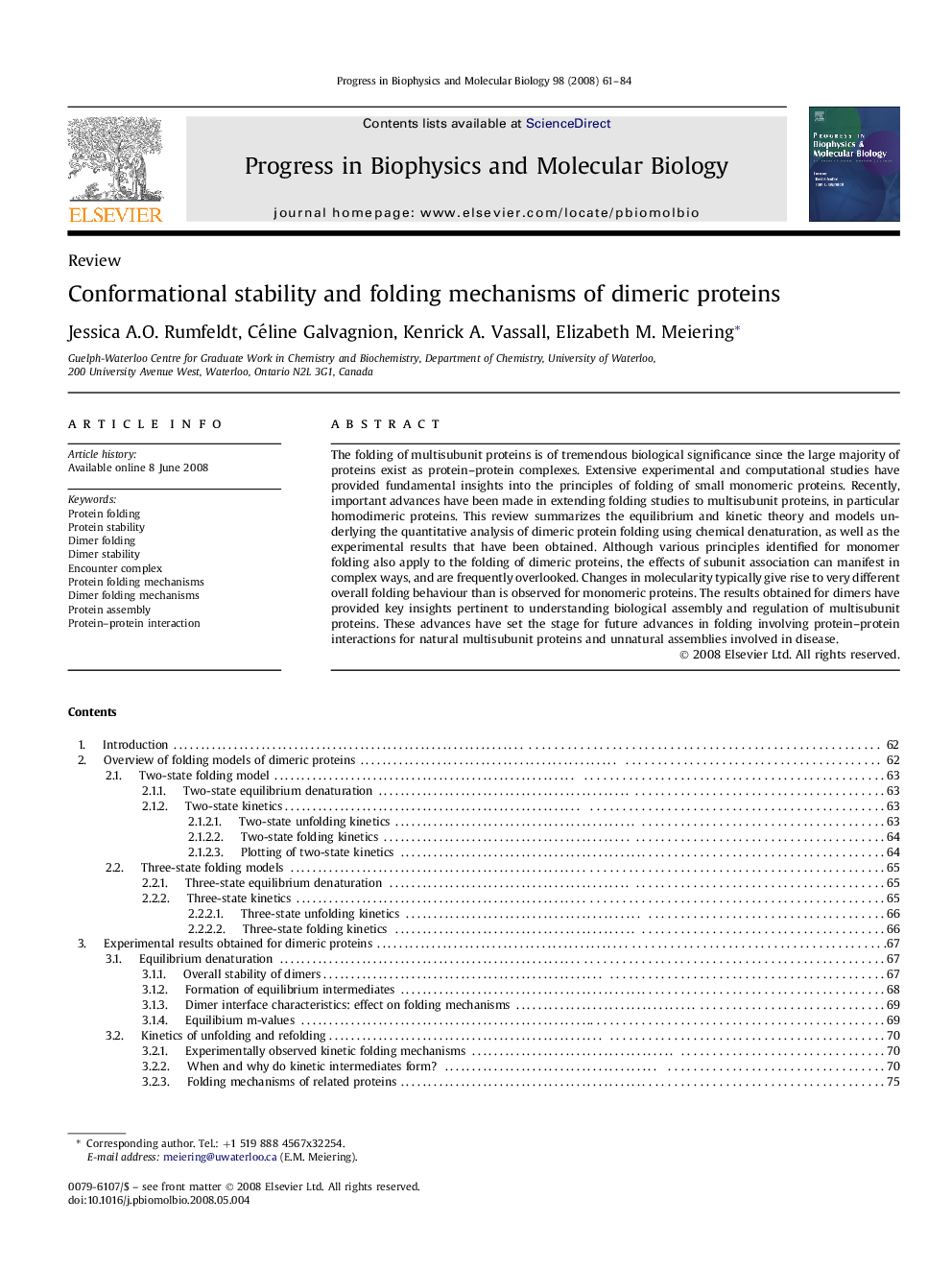| Article ID | Journal | Published Year | Pages | File Type |
|---|---|---|---|---|
| 2070382 | Progress in Biophysics and Molecular Biology | 2008 | 24 Pages |
The folding of multisubunit proteins is of tremendous biological significance since the large majority of proteins exist as protein–protein complexes. Extensive experimental and computational studies have provided fundamental insights into the principles of folding of small monomeric proteins. Recently, important advances have been made in extending folding studies to multisubunit proteins, in particular homodimeric proteins. This review summarizes the equilibrium and kinetic theory and models underlying the quantitative analysis of dimeric protein folding using chemical denaturation, as well as the experimental results that have been obtained. Although various principles identified for monomer folding also apply to the folding of dimeric proteins, the effects of subunit association can manifest in complex ways, and are frequently overlooked. Changes in molecularity typically give rise to very different overall folding behaviour than is observed for monomeric proteins. The results obtained for dimers have provided key insights pertinent to understanding biological assembly and regulation of multisubunit proteins. These advances have set the stage for future advances in folding involving protein–protein interactions for natural multisubunit proteins and unnatural assemblies involved in disease.
